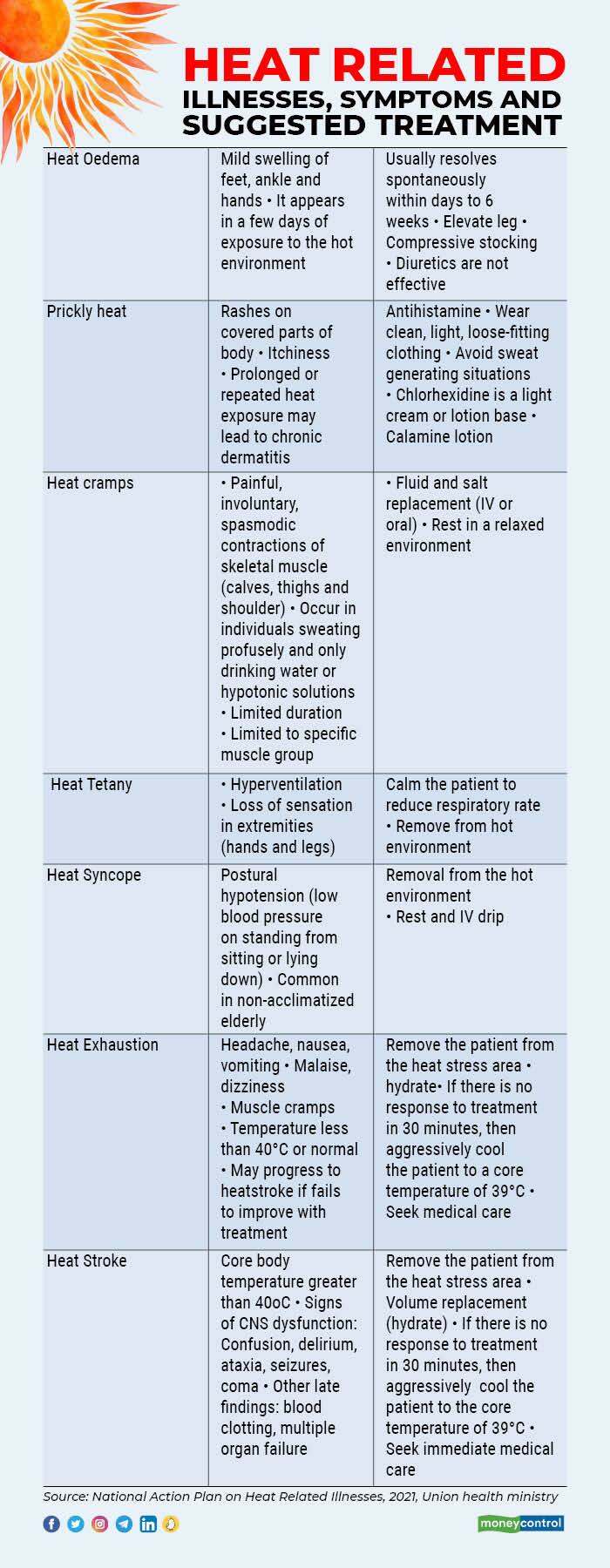



India and parts of South Asia are reeling under an unprecedented heatwave in April, with dangerously high temperatures setting in much earlier than usual.
The dry spell comes on the back of the hottest March recorded in the region since 1901 as many Indian states experienced daytime temperatures ranging from 40-45℃ over the past few weeks.
The extreme temperatures have raised concerns over primary and secondary level health systems, both in the public and private sectors, getting flooded with patients requiring treatment of heat-related illnesses.
While the Union government hasn’t put out a public health warning or heat action plan this year as yet, officials in the health ministry maintained that they released an advisory to states recently asking them to step up facilities and services for people landing up in hospitals due to extreme heat conditions.
Guidelines have been sent to the states as part of the routine exercise carried out every year ahead of summer to minimise cases of dehydration, heat exhaustion and heat stroke.
These guidelines are in addition to the National Action Plan on Heat Related Illness, prepared under the National Programme on Climate Change and Human Health, which was released by the ministry last July.
Heat guidelines for states
Officials in the ministry’s public health division said the detailed set of guidelines had been sent to the states almost two weeks ago.
“These guidelines included preventive and curative measures required for heat-related illnesses and we expect the states to follow them,” said a senior official. “However, it’s not possible for us to centrally monitor what each state is doing.”
The states have been instructed to equip primary and community health centres, district hospitals and medical colleges with dedicated beds for patients with heat-related illnesses and to stock up on specified medicines and medical devices to treat and manage them.
“There are also preventive suggestions given in the guidelines such as ensuring access to clean drinking water, suggesting that people avoid outdoor activities during the hottest hours, issuing alerts for extreme heatwaves, and making extra preparations to care for kids and the elderly,” the official added.
However, as is the case every year, the officials conceded that heat strokes may end up killing hundreds of vulnerable people.

Estimated 3,775 deaths in 4 years
The Integrated Disease Surveillance Programme at the National Centre for Disease Control under the health ministry has been collecting and reporting morbidity and mortality data of heat-related illnesses from vulnerable states since 2015.
It estimated that 3,775 deaths were reported during 2015-2019 (2,040 deaths in 2015, 1,111 deaths in 2016, 384 deaths in 2017, 25 deaths in 2018, and 215 deaths in 2019).
Also read I COVID-19 surveillance reports disrupted for three months after ministry sought to vet bulletins
Experts point out that while there should be public health warnings issued by the administration, protection from heat is also an individual’s responsibility.
“People may generally underestimate the risk of what hot weather conditions may do to them and may make them complacent. Physical exertion in very hot, humid weather is the most common cause of hyperthermia (extreme body temperature),” said Dr Dilip Gude, a consultant physician in Hyderabad.
‘Need clear instructions’
Dr Trupti Gilada, an infectious disease specialist with Masina Hospital in Mumbai, said as many states stare at one of the longest and worst heatwaves in decades, most people, especially in areas like Mumbai that aren’t usually hit by such high temperatures, may be unprepared and ignorant about the steps to be taken.
“Very widespread messaging across all media and social media platforms is therefore essential to rapidly reach out to every section of the community,” she said.
Gilada said people should be asked to stay indoors during the hottest hours of the day. Simultaneously, strategies need to be implemented immediately to keep markets, services like banking and other government services open during relatively cooler hours, she said.
Educating the people on prevention, identification and management of heat exhaustion and strokes is also very crucial, according to Gilada.
Also read I COVID-19 vaccines for 5-11-year-olds may be limited to private hospitals
Need long-term measures
Bobby John, an independent public health expert who is also a senior consultant to the World Health Organization – South East Asia, said that while the health ministry may be a last-mile responder, much needs to be done to let the region remain a liveable place.
“There is a lot of talk around smart cities but are our cities prepared for the constant rise in temperatures that are occurring due to climate change?” he asked. “A lot of policy intervention is also required in that area so that we do not have to worry about extreme temperatures in summers and severe pollution during the winters.”
Discover the latest Business News, Sensex, and Nifty updates. Obtain Personal Finance insights, tax queries, and expert opinions on Moneycontrol or download the Moneycontrol App to stay updated!
Find the best of Al News in one place, specially curated for you every weekend.
Stay on top of the latest tech trends and biggest startup news.